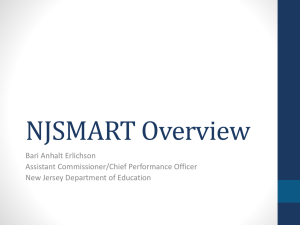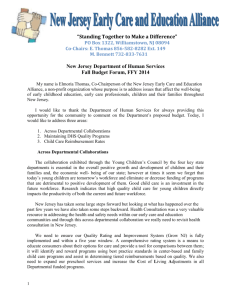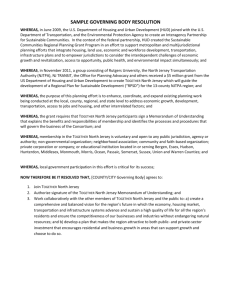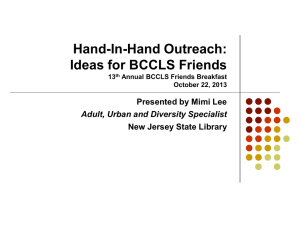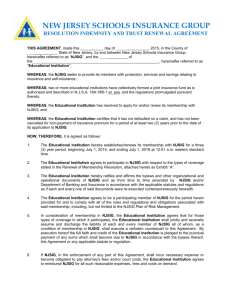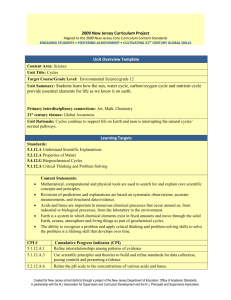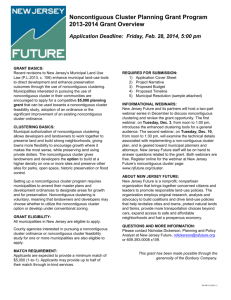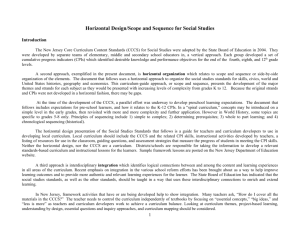NJECE Alliance position paper 10-2013
advertisement
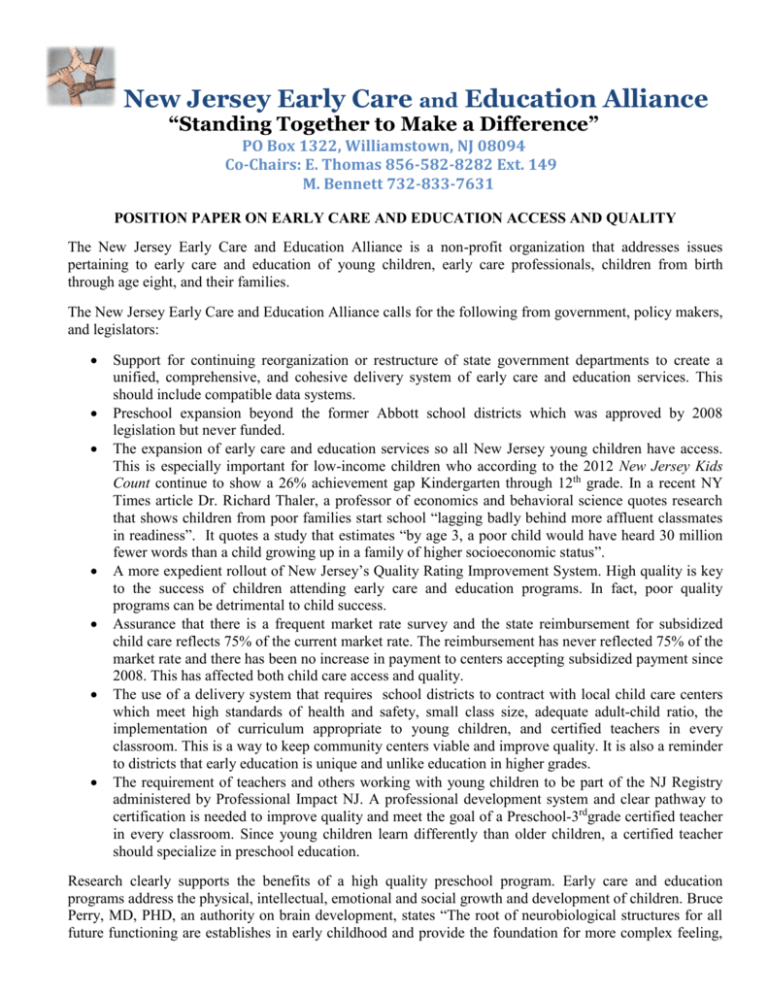
New Jersey Early Care and Education Alliance “Standing Together to Make a Difference” PO Box 1322, Williamstown, NJ 08094 Co-Chairs: E. Thomas 856-582-8282 Ext. 149 M. Bennett 732-833-7631 POSITION PAPER ON EARLY CARE AND EDUCATION ACCESS AND QUALITY The New Jersey Early Care and Education Alliance is a non-profit organization that addresses issues pertaining to early care and education of young children, early care professionals, children from birth through age eight, and their families. The New Jersey Early Care and Education Alliance calls for the following from government, policy makers, and legislators: Support for continuing reorganization or restructure of state government departments to create a unified, comprehensive, and cohesive delivery system of early care and education services. This should include compatible data systems. Preschool expansion beyond the former Abbott school districts which was approved by 2008 legislation but never funded. The expansion of early care and education services so all New Jersey young children have access. This is especially important for low-income children who according to the 2012 New Jersey Kids Count continue to show a 26% achievement gap Kindergarten through 12th grade. In a recent NY Times article Dr. Richard Thaler, a professor of economics and behavioral science quotes research that shows children from poor families start school “lagging badly behind more affluent classmates in readiness”. It quotes a study that estimates “by age 3, a poor child would have heard 30 million fewer words than a child growing up in a family of higher socioeconomic status”. A more expedient rollout of New Jersey’s Quality Rating Improvement System. High quality is key to the success of children attending early care and education programs. In fact, poor quality programs can be detrimental to child success. Assurance that there is a frequent market rate survey and the state reimbursement for subsidized child care reflects 75% of the current market rate. The reimbursement has never reflected 75% of the market rate and there has been no increase in payment to centers accepting subsidized payment since 2008. This has affected both child care access and quality. The use of a delivery system that requires school districts to contract with local child care centers which meet high standards of health and safety, small class size, adequate adult-child ratio, the implementation of curriculum appropriate to young children, and certified teachers in every classroom. This is a way to keep community centers viable and improve quality. It is also a reminder to districts that early education is unique and unlike education in higher grades. The requirement of teachers and others working with young children to be part of the NJ Registry administered by Professional Impact NJ. A professional development system and clear pathway to certification is needed to improve quality and meet the goal of a Preschool-3rdgrade certified teacher in every classroom. Since young children learn differently than older children, a certified teacher should specialize in preschool education. Research clearly supports the benefits of a high quality preschool program. Early care and education programs address the physical, intellectual, emotional and social growth and development of children. Bruce Perry, MD, PHD, an authority on brain development, states “The root of neurobiological structures for all future functioning are establishes in early childhood and provide the foundation for more complex feeling, thinking and behaving which develop during the rest of life”. High quality preschool provides children with the skills needed to succeed in school and later life. High quality programs reduce the persistent achievement gap for low income children by improving skills needed for reading, math, and problem solving. Not only does early care and education provide the groundwork for later life and future economic success but it provides parents the opportunity to leave their children in safe, secure learning environments while they work. We note many school districts still only provide a half day Kindergarten which is difficult for working parents. Since many children of working parents have attended a full day child care program, it leaves parents putting together a patchwork of Kindergarten and child care while they work. As more women enter the workforce, this becomes increasingly important to the ability of parents to provide for their families. Early care and education not only helps parents work but according to Benefits for All: The Economic Impact of the New Jersey Child Care Industry, the care and education of young children serves as an economic driver that supports more than 65,300 full time jobs in New Jersey. According to the study, the industry itself generates $2.55 billion in gross receipts. Early care and education is provided by a fragmented system which includes private for-profit child care, not-for-profit child care, company sponsored child care, federally funded Head Start, local school district programs, church sponsored and religious schools, registered and unregistered family child care homes, care by family, friends and neighbors, infant-toddler care, and school-age care. Preschool is the preferred term for district managed programs while child care is often used to denote care in a child care center or home. District run preschool programs in the 31 former Abbott districts were provided by both the district and the local child care centers that contracted with the district to provide services meeting standards higher than licensing standards. These standards included a certified teacher in every classroom. The Alliance applauds the work of BUILD, the New Jersey Council for Young Children, and other state leaders and organizations which are working toward a more unified system for early care and education in New Jersey. Hopefully the work of the Council will build on present systems, including the Professional Impact NJ Registry and continue to bring about a truly comprehensive larger system that supports professionals, supplies understandable information and access to families, and provides children, our future workforce, with the skills needed for success. 9/13


